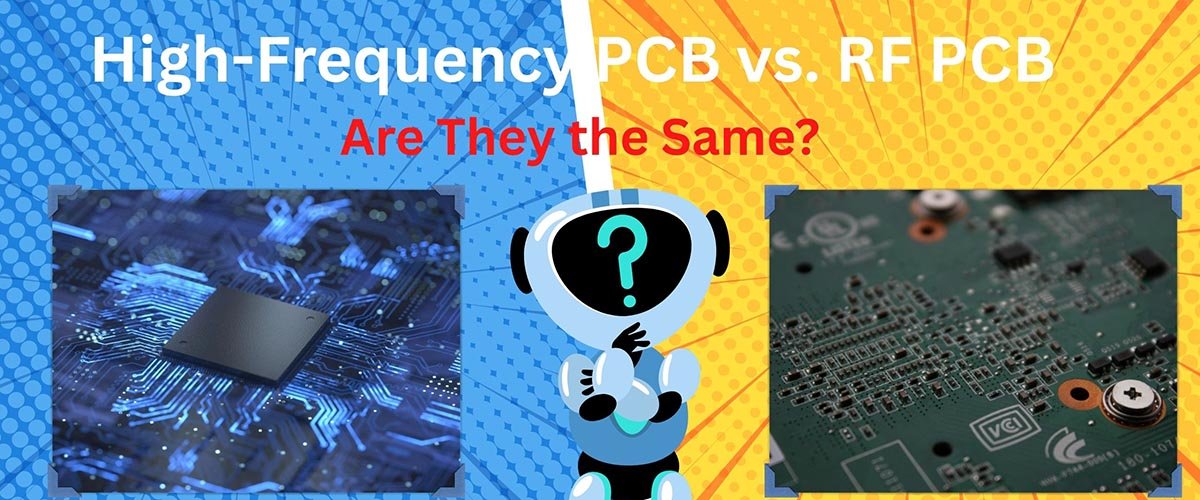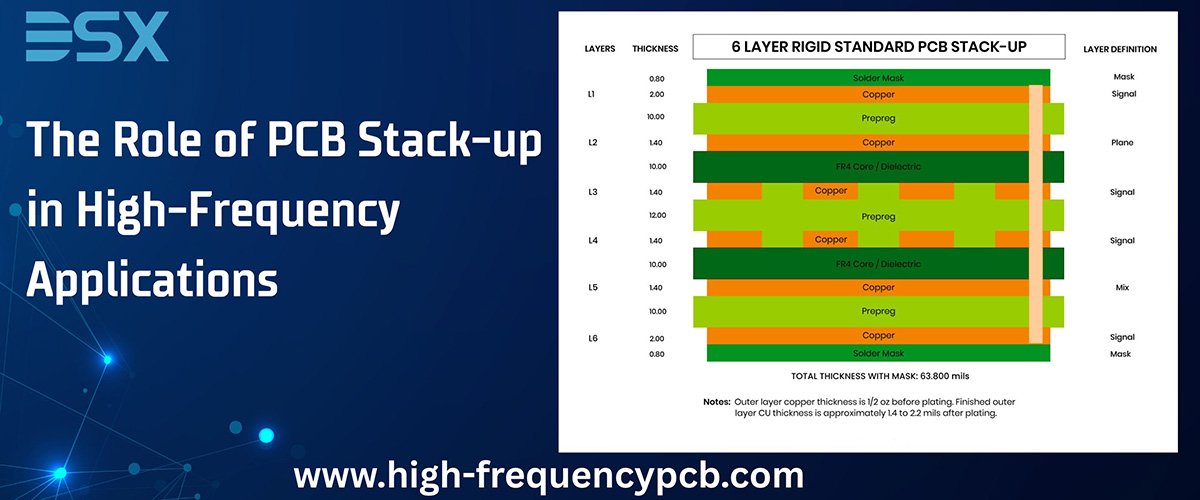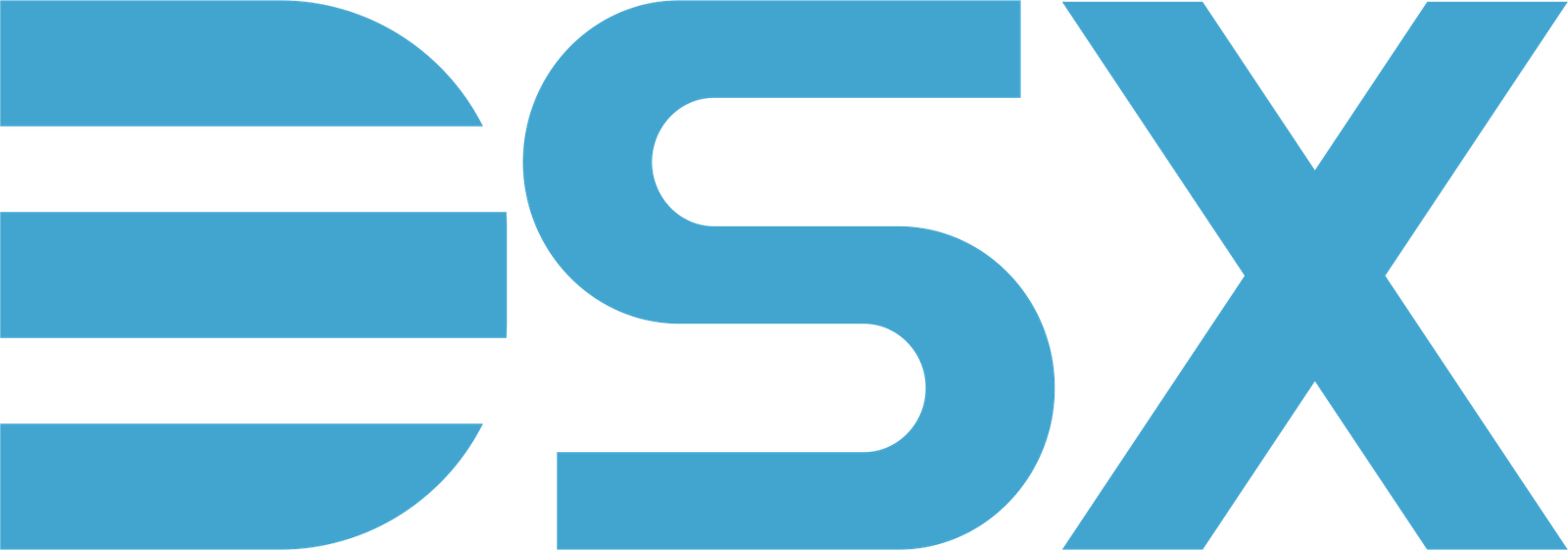High-Frequency PCB vs. RF PCB: Are They the Same?
In the rapidly evolving world of electronics, High-Frequency PCBs and RF PCBs are often discussed side by side. Many professionals and enthusiasts use these terms interchangeably. But are they really the same?
Let’s dive deep into what sets them apart with DSX Electronics, how they overlap, and why it's important to know the difference.

Understanding the Basics
What is a High-Frequency PCB?
A High-Frequency PCB (Printed Circuit Board) is a specialized type of circuit board designed to transmit signals at frequencies above 500 MHz, often reaching into the GHz range. These boards are engineered to maintain signal integrity, reduce electromagnetic interference (EMI), and support high-speed digital or RF communication.
In modern electronics, where data speeds are faster than ever, high-frequency PCBs are essential to ensure that signals remain strong, clear, and precise.
Materials Used in High-Frequency PCBs
Unlike standard FR4 boards used in general electronics, high-frequency PCBs require low-loss dielectric materials that can handle fast signal transitions with minimal distortion.
Here are some commonly used materials:
|
Material Type |
Key Properties |
|
Rogers (e.g., RO4003, RO4350) |
Stable dielectric constant, low signal loss, widely used in RF and microwave PCBs |
|
Teflon (PTFE) |
Ultra-low dielectric loss, ideal for very high-frequency applications |
|
Taconic |
Similar to Rogers, offers low Dk and Df, used in aerospace and telecom |
|
Isola |
High-performance laminates for both digital and RF circuits |
|
Enhanced FR4 |
Modified standard FR4 with improved properties, suitable for lower GHz use |
Key Parameters when choosing materials:
· Dielectric Constant (Dk): Lower and stable Dk is better for high-frequency.
· Dissipation Factor (Df): Lower Df means less signal loss.
· Thermal Stability: Crucial for performance under heat in high-speed environments.
Where Are High-Frequency PCBs Used?
High-frequency PCBs are found in systems where speed and signal clarity are critical. These include:
Telecommunications:
· 5G base stations, Satellite communication systems, Antenna systems
Automotive and Aerospace
· Radar and collision detection systems, Navigation and GPS modules, In-flight communication systems
Consumer Electronics
· Wi-Fi routers and modems, Smart TVs and streaming devices, Bluetooth devices
Medical Equipment
· MRI machines, Wireless patient monitoring devices, Imaging systems
Industrial and Defense
· Military radar and communication, Robotics and automation control, Microwave sensors
What is an RF PCB?
An RF PCB (Radio Frequency PCB) is a specialized type of high-frequency PCB. It is tailored for devices operating within the radio frequency spectrum (3 kHz to 300 GHz). RF PCBs emphasize wireless communication performance, often requiring more precise design practices such as impedance control, EMI management, and antenna integration.
Materials Used in RF PCBs
To function properly at high frequencies, RF PCBs require special substrates that have consistent electrical properties. Standard FR4 material is often not sufficient. Instead, manufacturers use advanced materials with low dielectric loss and stable dielectric constant (Dk).
Here are some commonly used materials:
|
Material Type |
Description |
|
Rogers |
Industry-standard for RF; low Dk variation, low signal loss |
|
Taconic |
Excellent for high-frequency & microwave applications |
|
Isola |
Offers high-performance laminate options for RF/microwave use |
|
Teflon (PTFE) |
Very low dielectric loss; great for high-frequency and high-speed signals |
|
Ceramic-filled PTFE |
Improves thermal and mechanical stability over pure PTFE |
|
Hydrocarbon Resin Blends |
Balanced cost-performance option for mid-frequency designs |
These materials help minimize signal attenuation and allow better control over impedance and electromagnetic interference (EMI).
Where is RF PCB Used?
RF PCBs are critical in any device that transmits or receives wireless signals. Their use is expanding rapidly with the growth of 5G, IoT, and satellite technologies.
Typical Applications Include:
· Wi-Fi Routers and Modems
· Bluetooth Devices
· GPS Navigation Systems
· Cellular Communication Devices (4G/5G)
· IoT Sensors and Smart Home Devices
· RFID Systems
· Antenna Systems
· Radar and Satellite Communication
· Microwave Transmitters/Receivers
· Medical Imaging Equipment (MRI, etc.)
In all these applications, maintaining clean, distortion-free signal transmission is vital, and that's exactly what RF PCBs are engineered to achieve.
Comparison Table: High-Frequency PCB vs. RF PCB
While High-Frequency PCBs and RF PCBs share similarities in handling signals at elevated frequencies, they serve slightly different purposes in electronic design. High-Frequency PCBs is a broad category that includes any circuit board operating at frequencies typically above 500 MHz, used in both digital and analog applications like high-speed computing, radar, and telecommunications. On the other hand, RF PCBs are a subset of high-frequency PCBs, specifically designed for circuits operating within the radio frequency spectrum (3 kHz to 300 GHz). RF PCBs are more focused on wireless communication, requiring tighter impedance control, minimal signal loss, and special layout techniques to ensure performance. In essence, while all RF PCBs are high-frequency boards, not all high-frequency PCBs qualify as RF PCBs due to their broader use cases beyond wireless transmission.
|
Feature |
High-Frequency PCB |
RF PCB (Radio Frequency PCB) |
|
Frequency Range |
Typically above 500 MHz |
Within 3 kHz to 300 GHz (RF spectrum) |
|
Application Scope |
General high-speed circuits |
Wireless and RF communication-specific |
|
Material Used |
Rogers, Teflon (PTFE), FR4 (enhanced) |
Rogers, Taconic, Isola, PTFE |
|
Design Complexity |
Moderate to high |
High (requires precise impedance, EMI control) |
|
Common Applications |
5G, Radar, High-speed digital circuits |
Wi-Fi, Bluetooth, IoT, RF transmitters/receivers |
|
Impedance Control |
Important but varies by use-case |
Critical and must be tightly controlled |
|
Antenna Integration |
Not always required |
Frequently includes integrated or external antenna |
|
Subset Relationship |
Broader category |
A subset of High-Frequency PCBs |
Key Takeaways
· All RF PCBs are high-frequency PCBs, but not all high-frequency PCBs qualify as RF PCBs.
· High-Frequency PCBs include digital, analog, and mixed-signal designs operating at high frequencies.
· RF PCBs are more application-specific, focusing solely on wireless communication and RF signal integrity.
While the terms High-Frequency PCB and RF PCB are related, they are not synonymous. Understanding the distinction helps in choosing the right materials, design techniques, and manufacturing processes for your project.
Whether you're building a radar system, a 5G device, or a Bluetooth-enabled gadget, using the right terminology and design approach is key to performance and reliability.
Choose DSX Electronics – Your Trusted PCB Partner
At DSX Electronics, we don’t just manufacture PCBs — we provide smart, reliable solutions tailored to your unique project needs. Whether you're working on cutting-edge RF communication systems, high-frequency circuits, or next-gen IoT and 5G devices, our experienced engineers are here to help you choose the perfect PCB for optimal performance.
From material selection to stack-up design, we guide you every step of the way. Our boards are made with high-quality materials such as Rogers, Taconic, Isola, and PTFE, ensuring low signal loss, excellent thermal stability, and consistent performance even in the most demanding applications.
With a deep focus on quality, innovation, and on-time delivery, DSX Electronics is the partner you can rely on to bring your ideas to life. Let us simplify your PCB development process with expert advice, precision manufacturing, and exceptional customer support.
· Custom PCB Solutions
· High-Frequency & RF PCB Expertise
· Fast Prototyping & Global Delivery
Partner with DSX Electronics today — and power up your project with confidence.
 The Role of PCB Stack-up in Hi
The Role of PCB Stack-up in Hi
 Why Are High-Frequency PCBs Es
Why Are High-Frequency PCBs Es
 High-Frequency PCB vs. RF PCB:
High-Frequency PCB vs. RF PCB:
 Why Signal Integrity Matters i
Why Signal Integrity Matters i
